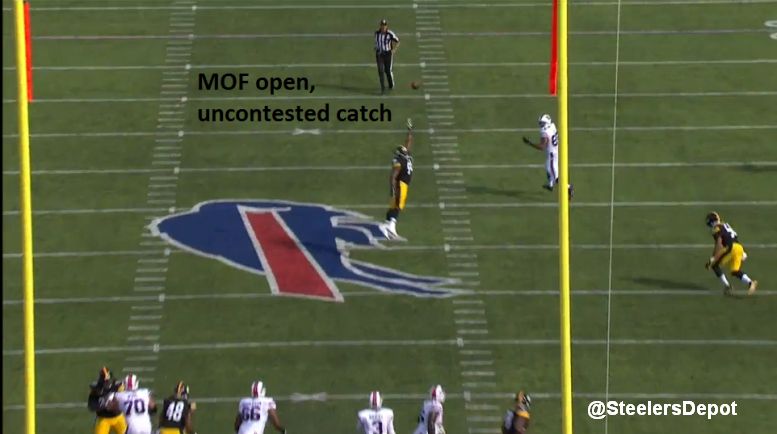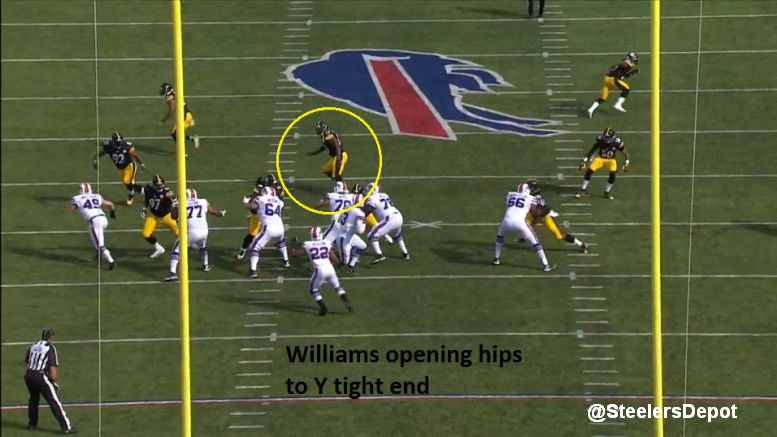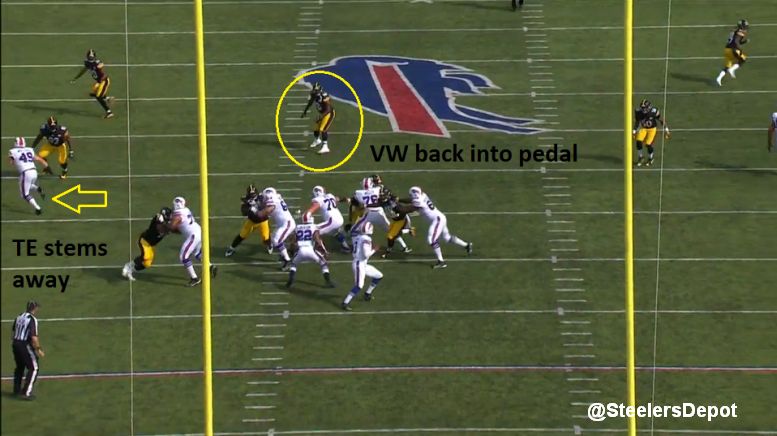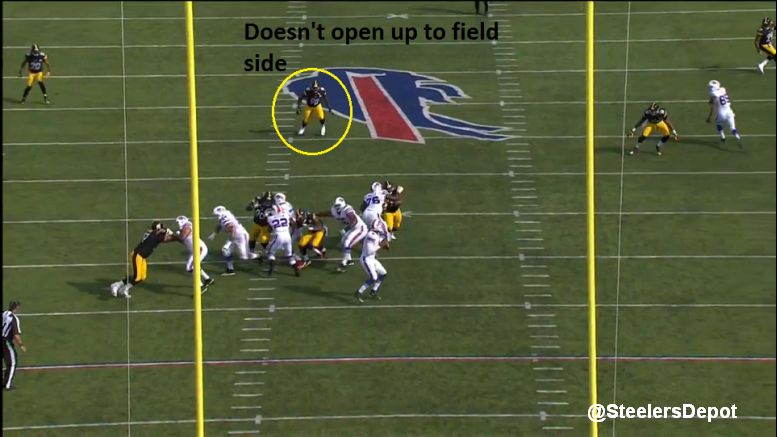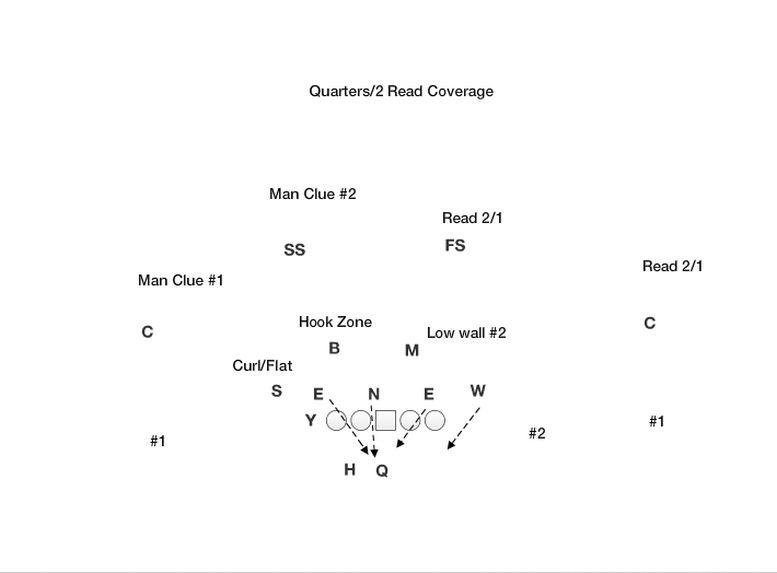We’re back in the film room this morning to break down one of the Pittsburgh Steelers several defensive mishaps from Saturday’s game against the Buffalo Bills.
The biggest splash play came via Charles Clay’s 67 yard touchdown in the first quarter. By now, you’re probably well aware the Steelers were in a Tampa 2 scheme. But we’ll break the play down a little farther, specifically regarding Vince Williams’ coverage on the play.
One of the first film room articles I did at the start of the preseason was on MIKE linebacker rules in a Tampa 2. Open up to the passing strength, get depth, carry anything vertical.
The Bills are in a 2×2 set. Using the rules we went over last time, the MIKE ‘backer is supposed to open up to the field. The NFL’s more narrow hash marks make the differentiation between field and boundary a little less relevant than say, in college, but they’re still there. In this case, the ball is slightly to the left and if you want to get technical, Williams is opening up to the boundary.
However, because of how small the difference is and the fact the actual Y tight end is to that side, it’s fair to give Williams the benefit of the doubt that he initially opened up to the correct side.
As the tight end, #49, continues to stem outside and down the numbers, Williams flips back to his pedal. Which is correct – he’s not going to carry the tight end down the numbers. He has to protect between the hashes. Following the tight end is going to put Williams out of position, unable to stop or discourage any crossing routes.
The issue I have is with Williams not turning and opening up to the other side, gaining depth and scanning for any vertical threat from #2 down the seam. Instead, Williams stays in his pedal, reading the QB and not gaining a lot of depth. It creates a window and uncontested catch for Clay down the seam.
The narrative on Williams is that he’s slow and can’t cover, this play being used as the most recent example of that. He obviously isn’t the ideal cover linebacker but is better than people give him credit for and this play shouldn’t change anyone’s mind. This isn’t a physical issue. It’s not like he was funning full speed or turned and ran down the seam, simply unable to close or chase Clay down in time.
This is a technical and awareness issue from him. Not opening his hips to carry #2 down the seam. Makes him a sitting duck and an easy target for E.J. Manuel to throw it over his head.
This presents the other issue with pure Cover 2. Great way to beat Cover 2 is with a four vertical offense that sends routes down the seam. As the safeties drop into their deep half, landmark on top of the numbers, they’re reading the #1 receiver. If it’s an outside stem, the safety automatically has to protect against the threat of him running vertically. Because when a receiver has that stem from that wide split, they’re either running a streak or a comeback. When the #1 receiver to Shamarko Thomas’ side stems outside, Thomas must get his eyes on him and look for the vertical threat. It doesn’t allow for him to look at #2.
The counter to this is pattern matching. A mixture of man and zone where coverages are determined by route combinations. It allows defensive backs to read routes. Why I prefer a concept like 2 Read vs 2×2 sets. It allows the safety to read 2 to 1. If both run vertically, as they do in this play, the safety becomes responsible for #2 while the cornerback has all of #1.
Example I drew up here.
This prevents exploitable weak spots in coverage, the ones you get when you spot drop like we have on this play. And that’s the biggest worry about the use of the Cover/Tampa 2 defense being used more liberally than in previous years.

